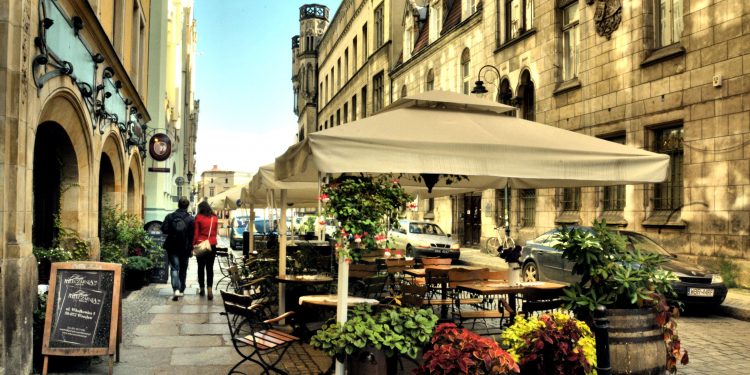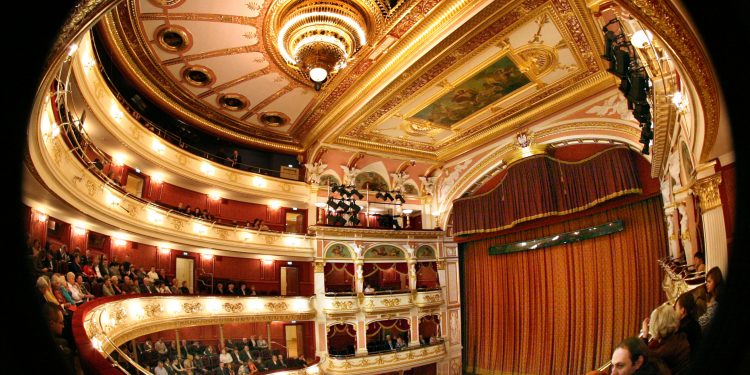Visit stunning Wroclaw, the city of bridges
Poland’s fourth largest city is also one of its most stunning, boasting a range of architectural charms that add to its thriving cultural agenda. With it’s location close to another Polish gem, Krakow, the two can easily be combined.
By Adriana Alcina Pictures: Dimitris Xygalatas, PR
Labelled the ‘city of bridges’, Wrocław is connected by over 100 iron bridges and lies in the middle of the Silesian Lowland, where the Oder River branches out to form 12 islands.
This historical Polish city was founded in the 10th century and has had a tumultuous history, having been occupied by Czechs, Austrians, Hungarians and Germans. Before the Second World War, it was known by its German name Breslau.
Wrocław’s epicentre is Rynek, the city’s medieval market square, lined with narrow, colourful grand houses, in styles ranging from Gothic to Art Nouveau.
This central square was strategically built on the crossroads of Western and Eastern Europe, and like a great part of the Old Town, was devastated from the bombings of WWII.
For that reason, all the buildings have been reconstructed, preserving their original architectural design.
Today they comprise municipal buildings such as the impressive Town Hall, elegant shops and interesting edifices.
The fountain and monument to Aleksander Fredro (a famous Polish playwright) are regular meeting points for Wrocławians, whereas the Jean and Margot tenement houses connected with an arch tend to draw lots of tourist attention .
If you are fond of architecture, do not miss the Modernist Ludowa Hall. Erected in 1913, it became the largest reinforced concrete structure in the world at the time. Today, it operates as an entertainment venue for trade fairs and cultural and sporting events.
Among Wrocław’s most genuinely enjoyable sights are the neat open-air sculptures that are found throughout the city – for a complete list of them and their locations, see www.wroclaw.pl/en/wroclaw-openair-sculpures.
Other bizarre sightings worth noticing around the city are the hundreds of Wroclaw dwarfs that represent different professions or everyday aspects of life.
Communism has left its mark on the area, with dull concrete socialist architecture that invades the suburbs. Yet some areas are very interesting, like Ostrów Tumski.
By crossing Tumski Bridge you can reach this historical district that encompasses enormous churches, the archbishop’s palace and the majestic Gothic St. John the Baptist Cathedral.
The terrace located on the cathedral’s northern tower provides superb views of the Oder River winding through the city.
Other great spots from which to catch a bird’s eye panorama view of the city are the Penitent Bridge and the rooftop at the 212-metre Sky Tower.
If you want to take a break, head to the beautiful Szczytnicki Park, where you particularly have to admire the large multimedia fountain where visualisations are projected with accompanying music and laser effects throughout the summer season.
Classical and contemporary music shows are held during the evenings while children’s shows are featured on Sundays at 14:00.
The hidden Sw. Antoniego and Pawla Wlodkowica streets are full of atmospheric new and modern cafés and bars, while the cosy Café Mleczarnia, in the yard of the Old Synagogue, and the Bohemian Café Kalambur are both local favourites.
When you start feeling hungry, try one of the numerous local bistros serving delicious, inexpensive food, such as Lubu-dubu, Ambasada and Przedwojenna.
You can’t fully experience Wrocław without sampling one of the many popular breweries spread across the city.
The most famous beer cellar is perhaps Piwnica Świdnicka, but if you’d rather avoid the crowds, Spiý brewery is also a fantastic choice.
Situated in the underground area of the new town hall, the bar serves homemade wheat beer, often accompanied by wholemeal bread and smalec – a traditional Polish spread made from lard and spices.
A popular spot for a picnic is Wyspa Slodowa (Slodowa Island), with platforms on the river where you can also do people watching and admire the views of the University.
In 2016 Wroclaw was European Capital of Culture and managed to fulfil its ambition – namely to make the city even better known to the world, something the mayor was proud to have achieved.
“In 2016 we had 5.2 million visitors, two times more than during an average year, many of whom came from outside Poland. We also made numerous contacts with sponsors and international investors,” he said at the closing ceremony in December 2016.
Also in 2017 numerous events are going on and there is a huge selection to choose from within opera, theatre, music, film, the visual arts, performance, literature and architecture.
If you are into opera, and are in town 23 June to 2 July, you can enjoy a magnificent performance at Wroclaw Opera of the operetta Faust.
The opera was created by French composer Charles Gounod and is based on the legendary poetry of Johann Wolfgang Goethe. Beata Redo-Dobber will direct this new Faust production in Wrocław Opera with Marcin Nałęcz-Niesołowski as music director.
Or enjoy the Staatskapelle Dresden when they perform for the first time in Wrocław the 10 June under the baton of outstanding British conductor Daniel Harding.The program of his concert with Dresden orchestra includes Mahler and Dworzak’s compositions.







